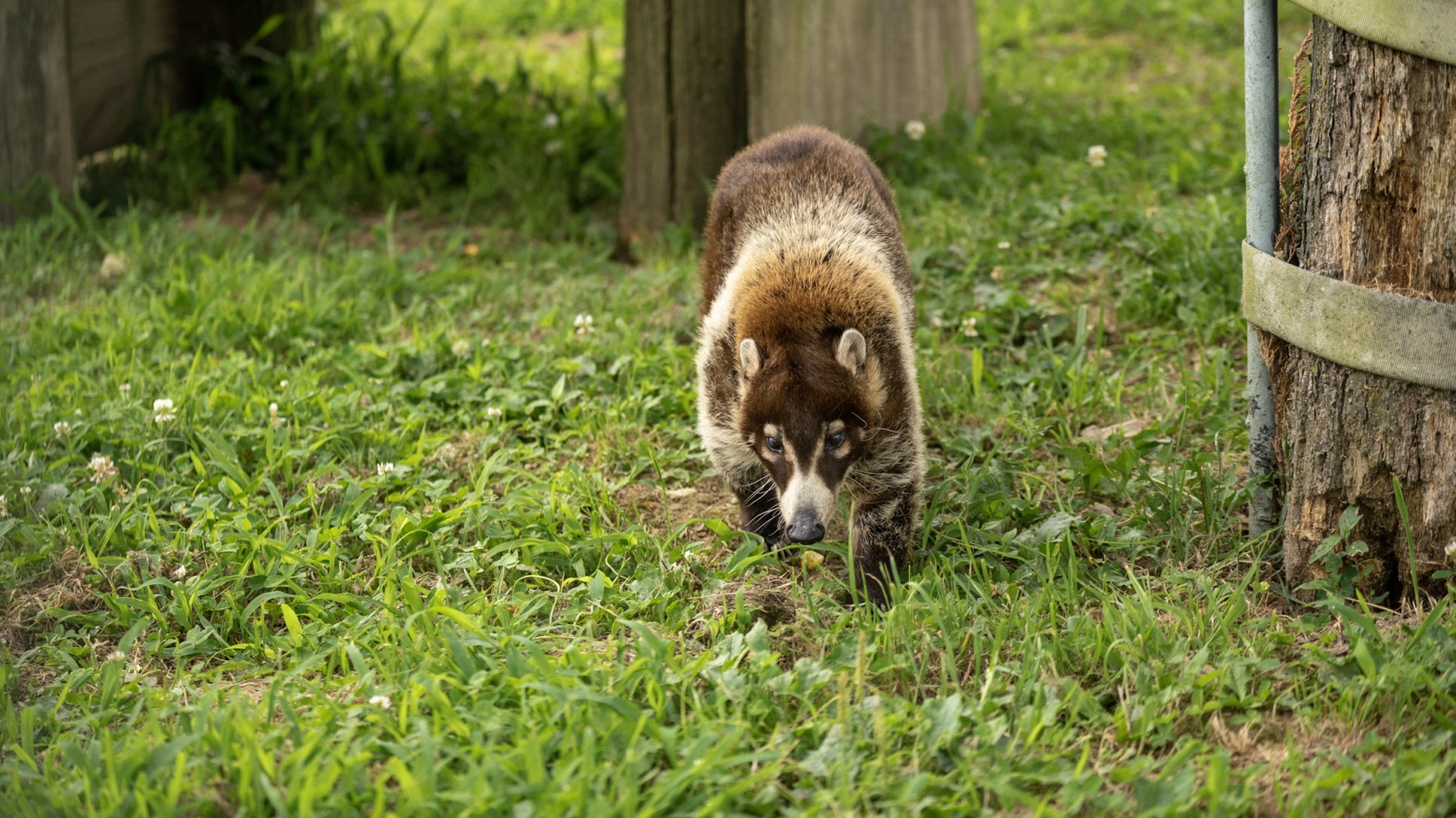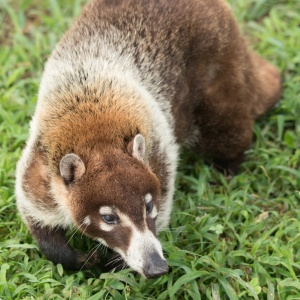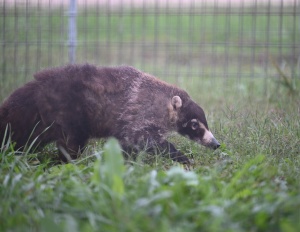
In Memory of Flip
For the most part at Turpentine Creek Wildlife Refuge, we have big cats and small cats. It is safe to say we are a big cat refuge, but we do have some animals that do not belong in the cat family. One of them was Flip, a White Nosed Coatimundi or coati. When Flip passed, she was 17 years old. In 2009, we rescued her from a fake zoo in Branson, Missouri with several other animals.
What’s That?
A White Nosed Coatimundi, coati, almost looks like an Anteater, but it is actually cousins with the raccoon family! Coatis are native to South and Central America, but not here in Arkansas, though they may be found in the southern parts of Arizona, Texas, and New Mexico. They are commonly found in tropical woodlands and open forests but are sometimes found on small mountain ranges, in chaparral conifers, and oak woodlands.
These animals live anywhere from 5 to 7 years out in the wild, but when they are in captivity, they can live from 14 to 20 years. They can weigh up to 13 pounds and get on average around 3.5 feet long! They vary in color from reddish-brown to black with a light undercarriage. Their tail really gives their relation to the raccoon away by having black rings around it.
Coatis are also very social animals. The females live in groups known as bands with up to 30 other females and young. They are very vocal within the group by alerting one another when there are males around. They spend most of their days grooming each other, but when it comes to food, their social personality completely changes.
Males have a different lifestyle. When they reach a mature age, they leave the band they grew up with and become solitary. The only time it is okay to join a band is when breeding season is upon them.
Food
Coatis are omnivores that mostly eat fruit, vegetables, seeds, insects, reptiles, and occasionally small rodents. Their favorite food of all is a prickly pear! These animals are excellent climbers that use their long sharp claws to dig and climb in trees. They also use their long nose in order to rummage in the ground for their insects and seeds. “Hunting” is done during the day and they sleep the night away like humans, but they do not like to share their food with each other.
Like all animals in the food chain, each one has a purpose. The coati helps keep the insect and rodent population under control. Cougars and Jaguars will then prey upon the coatis. This keeps the food chain in order and gives everyone a purpose in life.
Reproduction
The breeding season for White Nosed Coatis ranges typically from January to April. This is roughly when the food sources are most abundant. When the breeding time comes, a singular male will be allowed to join the band and defend it from others.
The female will be pregnant for 70 to 80 days. When she is ready to give birth, she will find a safe place away from the band, normally in a tree or small hole, and will not return the band until her young of 2 to 7 pups are 5 to 6 weeks old.
The young pups have a rough go about it when they leave their little nest. These coati pups are preyed upon by monkeys, snakes, cats, and even male coatis. They remain with their mother until she leaves to have another litter. When maturity comes at around 15 months to 2 years, the males will leave and the females have a choice to remain with that band or join a different band.
Flip
Flip was such a good girl. She loved to sleep away in her hammock that was located in her building. Her favorite food would include chicken, beetles, and eggs. When she would find an egg that we gave her, you would sometimes see her trying to gently carry it back to her building without breaking it. She was not always that successful though, cause with her sharp claws sometimes it would break and she would have to hurry and slurp up the egg yolk where she was. There were other times she was too impatient with her eggs that she just cracked it right there on the spot to drink that yolk. She also loved finding beetles to munch on, and when she would start munching on those beetles, it almost sounded like she was crunching on potato chips.
Flip’s birthday was July 4th, 2004 which means she was a little over 17 years old when she passed. Normally these animals don’t live that long, especially out in the wild, so she had quite a long life here.
She also loved to play with boxes. We even gave her a “car” for her 16th birthday! It looked like a race car and she actually hopped inside of it like she was driving it!
Flip was such a sweet and amazing girl, and many people who got to watch her sniff around her habitat could probably say the same thing. All that knew her will miss her greatly. We love you Flip!



